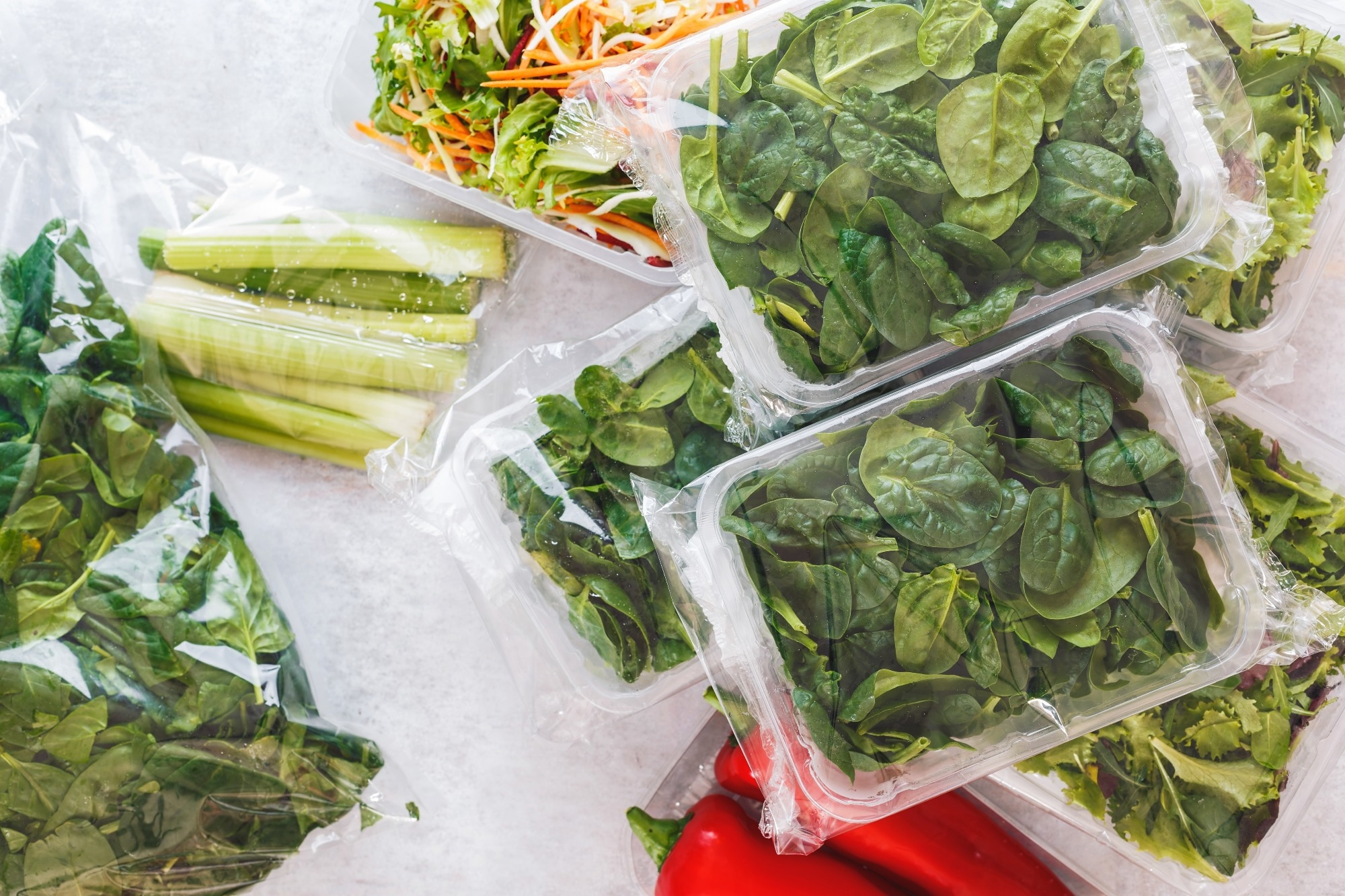A newly developed flexible, antimicrobial food wrapper with embedded SERS-based nanosensors could enable real-time detection of spoilage and contaminants in fresh food products.
 Image Credit: Slavica Stajic/Shutterstock.com
Image Credit: Slavica Stajic/Shutterstock.com
Smart Food Safety
Food spoilage is both an economic issue and a health risk. Most current packaging serves only as a passive barrier to external factors, without providing any insight into the freshness or microbial activity of the food it protects.
A new study, published in Small, presents a multifunctional, stretchable wrapper embedded with nanoscale sensors that actively monitor food quality over time. The packaging uses surface-enhanced Raman scattering (SERS), a highly sensitive spectroscopic technique that detects molecular signatures at trace levels. Integrating this technology into the wrapper allows non-destructive, instant sensing of spoilage markers and harmful residues directly from the food's surface.
Nanostructures for SERS Detection
SERS works by amplifying the Raman signals of target molecules, typically by using nanostructured materials with strong plasmonic properties. For example, gold (Au) and silver (Ag) nanostructures are particularly effective at generating localized surface plasmon resonances that enhance signal intensity.
To fabricate their sensing platform, researchers first created high-aspect-ratio nanostructures using krypton fluoride (KrF) lithography on silicon master molds, followed by reactive ion etching.
A custom polyurethane acrylate (PUA) resin was cast onto these molds to replicate the nanostructures and then UV-cured to produce durable PUA-based substrates. Gold was deposited via electron-beam evaporation to form a 100 nm Au layer.
Silver nanoparticles (Ag NPs), approximately 20 nm in diameter, were then drop-cast in multiple cycles onto the gold nanostructures. This step created densely packed SERS "hotspots," essential for amplifying the Raman response.
Download your PDF now!
Integration With Flexible, Antimicrobial Packaging
The nanostructured sensing elements were then incorporated into electrospun thermoplastic polyurethane (TPU) fibers infused with curcumin, an antimicrobial agent known for its bioactivity. The resulting material is a flexible, stretchable food wrapper that inhibits microbial growth and actively senses chemical changes related to spoilage.
The team subjected the sensor to analyte solutions for testing, using different extracts such as hypoxanthine (a spoilage marker), thiram (a pesticide), and food extracts using a 532 nm Raman laser to analyze its sensitivity. Samples included real food items like pork and oranges, which were monitored over time to track freshness.
Results: High Sensitivity in Real Time
The gold-silver nanostructures demonstrated excellent sensitivity to a wide range of food quality indicators. The Ag NPs, attached securely to the gold substrate, produced strong and stable Raman signals. Repeated drop-casting of Ag NPs improved performance, and the team found that five drop-casting cycles provided optimal signal enhancement without excessive material use.
The sensors reliably detected molecular markers such as purines, proteins, lipids, and pesticide residues. As spoilage progressed, corresponding SERS peaks changed over time, confirming the platform's ability to track freshness over time. Signal reproducibility and selectivity were also found to be high, thanks to the dense and uniform distribution of SERS hotspots.
The study also showed that the wrapper’s curcumin-infused TPU fibers inhibited microbial growth, as seen through physical observations of the preserved food samples over time. This dual functionality of active sensing and microbial protection is a major step toward intelligent packaging systems.
Implications and Applications
The work highlights the strength of combining plasmonic nanostructures with flexible packaging to create smart, multifunctional food monitoring systems. By integrating SERS-based sensing with antimicrobial materials, the researchers have developed a solution that goes beyond traditional protective packaging.
Future research may focus on improving the reusability of the sensor components, lowering production costs, and expanding the detection range to cover additional spoilage and contamination markers.
Journal Reference
Ha J.H., et al. (2025). SERS sensor integrated in stretchable and antimicrobial wrapper for food quality monitoring. Small, 21(13), 2501808. DOI: 10.1002/smll.202501808, https://onlinelibrary.wiley.com/doi/10.1002/smll.70391